The Properties of a Rigid Body
The properties of a rigid body influence its physics characteristics including colliding behavior, sliding speed,
resistance and bounciness behavior.
Mass
Mass influences behaviors when dynamic objects collide. Physics objects with a higher Mass value can cause the ones with a lower Mass value to bounce off more when they bump into each other. In iClone, a mass value of 1 equals to 100g.
Please note that the Mass value DOES NOT affect the falling speed of physics objects.
Rigid body to rigid body
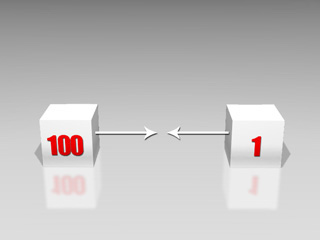
|

|
|
Two physics objects bump each other. |
The object with lower mass bounces off more. |
Rigid Body to Soft Cloth
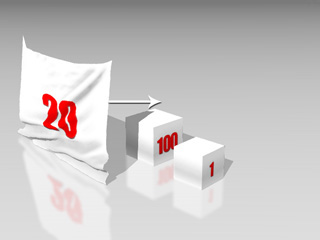
|
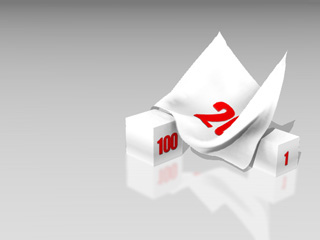
|
|
A soft cloth (20) moves toward rigid bodies. |
The heavier object (100) stays. The lighter object (1) is pushed away. |
Friction
Friction is the roughness of a surface which generates resistant force and causes a change in speed in objects that slide over it.

|

|
|
Two boxes slide down a ramp. (Ramp's friction = 30) |
The box with higher friction moves slower. |
A higher friction value can cause the sliding physics objects to rotate.
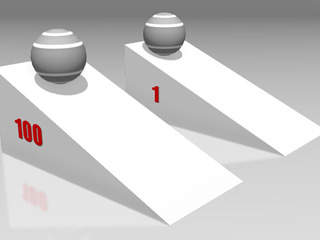
|
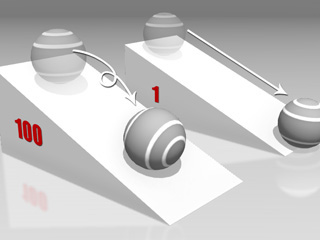
|
|
Ramps with different friction values. (Balls' friction = 30) |
The ramp with friction of 100 causes the ball to roll while the ball on the low-friction slope simply slides down. |
Damping
The Damping value in iClone can be taken as air resistance. Each physics object, especially the Dynamic and the Frozen ones, can have individual damping values. The damping produces an opposite-direction force to a physics object's direction of movement, which slows down the speed of the moving object.
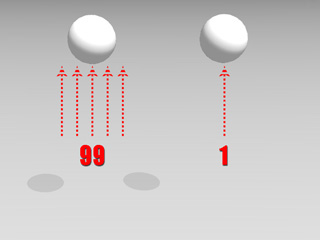
|

|
|
Two dynamic objects with the same settings but with different damping values. |
The object with a higher damping value falls slower. |
The Damping value affects soft cloths tremendously. You can use this value to make a feather or a cloth slowly fall down.

|

|
|
Feathers (soft cloth) with different damping values. |
They fall down at different speeds. |
Elasticity
Elasticity decides the bouncing force of a rigid body. The higher the value, the more the object bounces off when it collides with other physics objects:
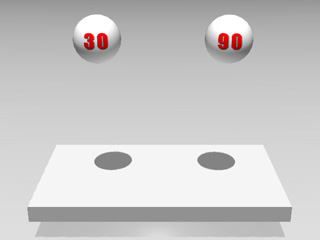
|
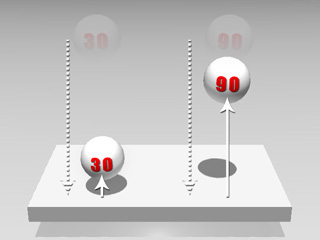
|
|
Two rigid bodies with different elasticity values. |
The one with the higher value bounces higher. |
Since the bouncing behavior involves two colliding objects, the result is a multiplied elastic effect.
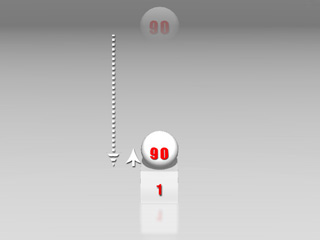
|
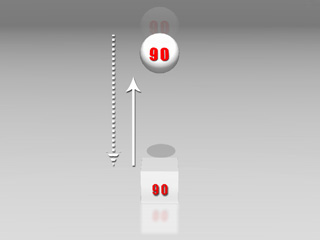
|
|
The ball hardly bounces because the elasticity of the other object is too low. |
The multiplied, high elasticity values cause the ball to bounce more. |
Elasticity is severely affected by speed. The higher the speed of a moving rigid body before colliding, the more it bounces off after collision.
Please note that the Damping value slows down the speed of a physics object, which decreases the bouncing reaction.

|

|
|
The ball bounces less because the initial speed is slow. |
The initial speed is high which causes the ball to bounce off more. |
